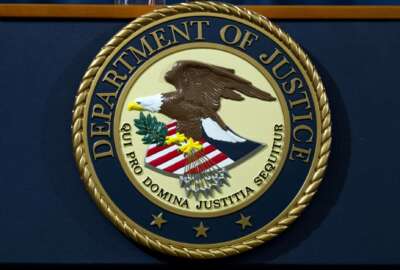
What’s in store for future coronavirus stimulus bills?
For our look ahead of Capitol Hill, Federal Drive with Tom Temin spoke to editorial director of Bloomberg government, Loren Duggan.
Best listening experience is on Chrome, Firefox or Safari. Subscribe to Federal Drive’s daily audio interviews on Apple Podcasts or PodcastOne.
An attempt by Senate Majority Leader Mitch McConnell at a fourth stimulus bill aimed at small businesses got stymied on party lines. This as party leaders think about dispensing with spending caps all together. For our look ahead of Capitol Hill, Federal Drive with Tom Temin spoke to editorial director of Bloomberg government, Loren Duggan.
Interview transcript:
Tom Temin: Loren, what can we expect this week? More attempts at a fourth bill?
Loren Duggan: We might see more attempts, and this bill is alternately being called the interim bill between three and an eventual fourth bill. But there’s also efforts to make it bigger than just the small business assistance that Mitch McConnell had in his plan that he tried to take to the floor on Thursday. But this is the next battle in this effort to come up with packages to aid the economy, with coronavirus largely shutting things down, keeping most people out of Washington and in their homes. But this was an effort to replenish one of the programs that was started in the phase three bill and in a week had used up by some estimates about a third of the allowable borrowing authority under this paycheck protection program, which was one of the key programs that was created in that law, and there’s an effort here to try and put more money into it. But once that program got reopened, Democrats came back with some items of their own that they wanted to see included in that package. So that’s where the stalemate came. On Thursday, we had Mitch McConnell offer his plan by unanimous consent. Democrats offered an alternative plan, and they objected to each other’s and it, you know, fell in those rocks right there with no progress made through the end of the week. So there could be more efforts this week to do that. We’ll be watching very closely. Or it could be something that has to wait for more members to get back into town.
Tom Temin: I was going to say this proposing and voting and disagreeing and mixing. Is this all happening in person or in some cyber sense?
Loren Duggan: No. This was real life with senators in the chamber. You had Mitch McConnell. You had Senator Roy Blunt from Missouri in the chair, and then you had Maryland’s two Democratic senators also talking, Ben Cardin and Chris Van Hollen. So this was an in person event in the Senate chamber for the I guess, half hour or so they were actually in session on Thursday. They have been meeting every three days or so for about 30 seconds in the Senate, just gavel in gavel out, known as a pro forma session. But they opened up this pro forma session to have speeches and allow this activity to take place. I’m not sure that we’ll see that again before the 20th which is the scheduled date when they’re to return and hold their next vote if everything holds according to plan. But this was an in person event, very quick. Everything, by the way, was attempted via unanimous consent, which allows any one senator to object. There wasn’t an effort here to bring the full chamber back in there. I think there were hopes by Mitch McConnell that you could get this bill brought up and maybe pass it by a voice vote, even without very many members in the chamber. But in the end, the objection to even getting to the point to have a vote, stymied the effort.
Tom Temin: Yes, and I guess they can meet and be distant from one another in that chamber. Although if all 100 were in, when you see those chambers in person, they’re actually not all that big.
Loren Duggan: They are fairly small. And we saw the challenge when a house met to pass the third package. Where to get to the quorum that they needed because one member was saying he would
object if a quorum wasn’t present. They spread people out even further than normal, putting some members up in the gallery that overlooks the house, where the president often points during the State of the Union. That’s when we usually see our shot of the gallery. But they use that full chamber to spread people out as far as possible and get that bare majority that they needed to have a quorum. One of the things that was working against this quick action on the bill, even in the House, besides the Democrats request to add money for hospitals, money for state and local government and things like that was Thomas Massie, who was causing issues the last time around, saying that he thought a quorum should be president to get up business. He was making noises on Twitter that perhaps he would do that again if they tried to pass something by unanimous consent. So there were many things working against quick action on a $251 billion bill. And that’s one of the reasons I think that it didn’t happen. Plus, just this disagreement about what else should potentially ride along with
this paycheck protection program.Tom Temin: And these discussion of maybe dispensing with the spending caps. I guess when you are printing $2-3 trillion that the government doesn’t have in the first place, the spending caps seem may be academic.
Loren Duggan: Well, for now, we’ve heard some talk from appropriators, and our Jack Fitzpatrick had a nice story on Friday that the appropriators the Cardinals have already been given preliminary numbers to work with for each of the 12 spending bills for fiscal 2021, those should be in place by October 1 if they followed regular order but, of course, they rarely get there by then. But one of the things that is being discussed is, do you exempt some of the categories of money here that deal directly with COVID-19 from the caps so that you don’t put squeezes on other programs as you try to fund things like the national strategic stockpile, or CDC or NIH. These agencies that have been so key to the COVID-19 response. If they added exemptions so that they might reopen the budget caps
law. You could see some pressure from people to keep up other regular spending where they agreed to have it for the year. But of course, as you know, the last stimulus bill had $2.2 trillion in it, although you know some of that was direct spending. Some of it was tax implications from providing the checks to individuals or the loans through this paycheck protection program in other areas that the Treasury Department will oversee. But when it comes down to the regular spending bills we could see is that where the fiscal restraint maybe holds or comes in a little stronger looking for places we’ve seen a couple of members talk about longer term needing to think about the mandatory spending and revenue and the entire budget picture because we’re going to have some pretty intense deficits this year that we haven’t seen for, perhaps ever. At least of the size that we’re looking at right now, at least in real dollar terms, Indeed.Tom Temin: And I guess things are really strange when you’ve got the Federal Reserve buying municipal bonds directly and all this other kind of crazy stuff happening. And meanwhile, you’re reporting that the House committee is putting together its National Defense Authorization Act and trying to get some sort of a form of that pretty soon.
Loren Duggan: Yeah. On both sides of Capitol Hill, the leaders of the House and Senate Armed Services Committee are looking at how to approach this. They know that they’re not gonna get to do things the way they normally do them. But we’ve reported that on the House side that Adan Smith, the chairman, and Mac Thornberry, the ranking member, are working to come up with what they call the chairman’s mark. And that’s the starting position that the committee would use normally if it were going to mark up. Now they’re not promising that they’re gonna have a markup necessarily in the next couple of weeks, but their target is May 1st to have some sort of base text to work off of, and then other members can submit their ideas for how to change it, modify it, maybe move closer, to their vision of what defense policy should be. On the Senate side, Jim Inhofe, the chairman there, has said that he’s still aiming to have a bill sometime in May. Again, markups could be an issue there and that timeline could slip. But they, like the appropriators, aren’t letting up on this important annual task that they do. They’re doing it in a very different way. I’m sure a lot of phone calls and pieces of paper being exchanged. One thing that we were seeing were these paper hearings or virtual hearings where they would have public witnesses submit their testimony and the members could ask questions based on that and get the responses doing that by paper. They kind of pulled back from doing some of that on the DoD side just because of everything that’s going on right now. But that was a way that they were already adjusting to not being in town was these virtual hearing. So, there’s still this notion that April 20th is the date when they would come back normally from their spring recess, and that’s still the kind of starting position now, with a Senate vote still locked in. But if the stay at home orders persist and people don’t come back to Washington, there may have to
be more adjustments to that schedule, including on the committee level.Tom Temin: I guess they could have a Zoom mark up with Google Docs or something.
Loren Duggan: Perhaps. I’ve seen some other legislatures around the world have used virtual tools
like that, have committee hearings using Zoom with different boxes of their members sitting at home. But you know, they’re the one thing that there’s been reluctance in both the House and Senate from leaders shifting to any sort of remote voting. A lot of members have called for that, but the rules don’t allow it. There have been some constitutional questions raised, although there are counters to those that are also out there. So we’ll see. I think it’s the length of time that the House and Senate can’t function normally that will dictate what happens in terms of the adoption of this, and they’ll have to look very closely at the constitutional elements of this.Tom Temin: Loren Duggan is editorial director of Bloomberg Government, as always thanks so much.
Loren Duggan: Thank you.
Copyright © 2024 Federal News Network. All rights reserved. This website is not intended for users located within the European Economic Area.
Tom Temin is host of the Federal Drive and has been providing insight on federal technology and management issues for more than 30 years.
Follow @tteminWFED
Related Stories





